Shift-Left Testing in API Development
Shift-left testing is an approach in software development revolving around earlier testing activities for improved product quality. However, this concept is applicable in many other fields - including API development!
Shift-left testing is a growing trend in software engineering. It advocates integrating testing practices earlier in development cycles, promoting a more robust and efficient development process in the long run.
With Apidog, an all-in-one API development tool, you can build, test, mock, and document APIs within a simple application. This ensures that users can have their undivided attention on just one environment.
To learn more about Apidog, click the button below.

However, shift-left testing is not only limited to software development. It can be practiced in many different fields of work - most noticeable in API development. This article will therefore highlight the core principles of shift-left testing, and the general benefits one can enjoy by practicing the development approach.
Main Advantages of Shift-Left Testing
Shift-left testing offers developers a paradigm shift in development lifecycles through yielding a variety of benefits. Here are some of the notable key advantages that developers will want to have too:
Enhanced Quality and Reduced Costs
By identifying and rectifying defects early on, when code changes are isolated and manageable, shift-left testing significantly reduces the cost of fixing bugs. Imagine a bug discovered during integration testing – resolving it might require modifications across multiple code segments, impacting development timelines and budgets. Conversely, catching the same bug during unit testing, a much earlier stage, necessitates alterations to a smaller codebase, minimizing rework and cost.
Faster Time to Market
Traditional testing practices, concentrated towards the later stages, can create bottlenecks and delay product releases. Shift-left testing, with its emphasis on continuous testing and early feedback, streamlines the process. Bugs are identified and addressed promptly, preventing delays caused by extensive bug-fixing sprees at the end. This allows for faster iteration cycles and quicker delivery of a high-quality product to market.
Improved Collaboration and Communication
Shift-left testing fosters a more collaborative development environment. Developers, testers, and other stakeholders are involved in the testing process from the beginning, leading to a shared understanding of requirements and functionalities. Early identification of potential issues creates opportunities for open communication and problem-solving, fostering a more cohesive team dynamic.
Increased Efficiency and Productivity
By integrating testing throughout the development cycle, shift-left testing promotes a preventative approach. Developers are empowered to write cleaner, more robust code from the outset, knowing that potential issues will be identified and addressed quickly. This reduces the need for extensive debugging later on, freeing up valuable development resources and boosting overall team productivity.
Proactive Security Posture
Integrating security testing practices into the shift-left approach allows for the identification and mitigation of vulnerabilities early in the development process. This proactive approach minimizes the risk of security breaches and costly exploits later down the line.
Risks Faced When Committing to the Shift-Left Testing Approach
While shift-left testing offers significant advantages, there are challenges you need to know. Here are some key obstacles to be wary of when implementing this methodology:
Cultural Shift
Transitioning from traditional, siloed development practices to a collaborative, shift-left approach can be a significant cultural hurdle. Teams accustomed to separate testing phases might resist the change or struggle to adapt to increased collaboration.
Skillset Gaps
Shift-left testing often requires developers to possess a broader skillset, encompassing not just coding expertise but also an understanding of testing principles and tools. Training and upskilling initiatives may be necessary to address these gaps.
Automation Investment
Effective shift-left testing heavily relies on automation. Building a robust suite of automated units, integration, and other tests requires an upfront investment in time and resources. Teams need to weigh the initial cost against the long-term benefits.
Potential Bottlenecks
Integrating testing throughout development can introduce new bottlenecks if not managed effectively. Clear communication and defined ownership of testing tasks across teams are crucial to ensure a smooth workflow.
Over-testing Risk
While testing early is beneficial, there's a risk of over-testing unstable or incomplete code. Focusing on the right level of testing at each stage and prioritizing critical functionalities is essential.
Apidog - Test APIs Thoroughly
As software developers will very likely need to work with APIs, it is advised to find a suitable API tool to accompany your app development purposes.
If you do not have an API tool or are still searching for a suitable one, we strongly advice you to consider using Apidog.

Apidog is a comprehensive API tool that provides users with all the necessary tools for the entire API lifecycle. With a simple and intuitive user interface, building, testing, mocking, and documenting APIs become effortless tasks!
Testing Indiviual APIs Using Apidog
Shift-left testing will involve lots of testing. To ensure that every step of your app development is fault-free, you will often need to test your APIs one by one.
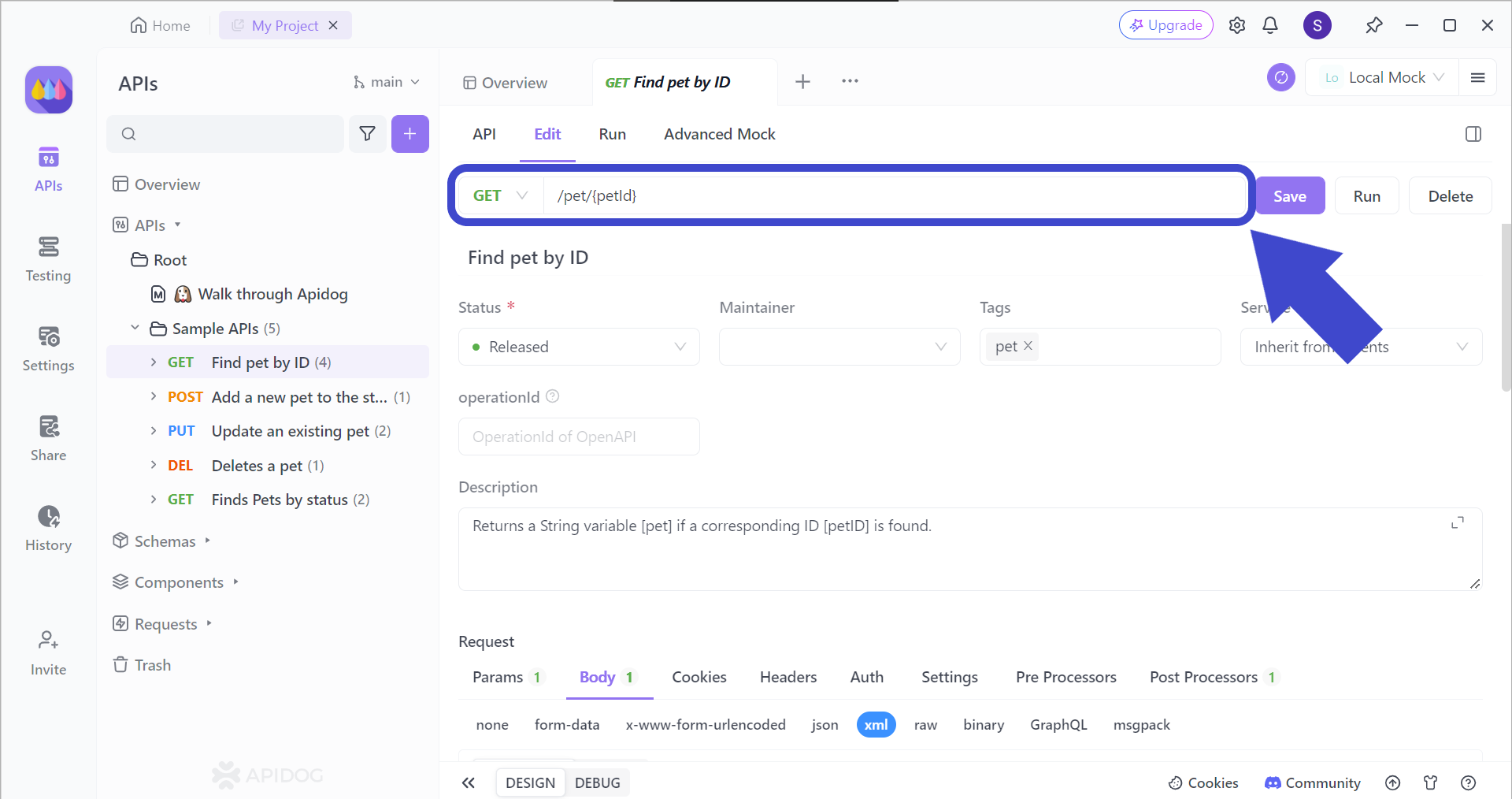
To test an endpoint, simply enter its URL. Include any necessary parameters specific to that endpoint. Feeling unsure about complex URLs with multiple parameters? A separate resource (not included here) offers guidance on how to target specific data within larger datasets.
If you're unsure about using multiple parameters in a URL, this article can guide you on how to hit the exact resource within larger datasets!

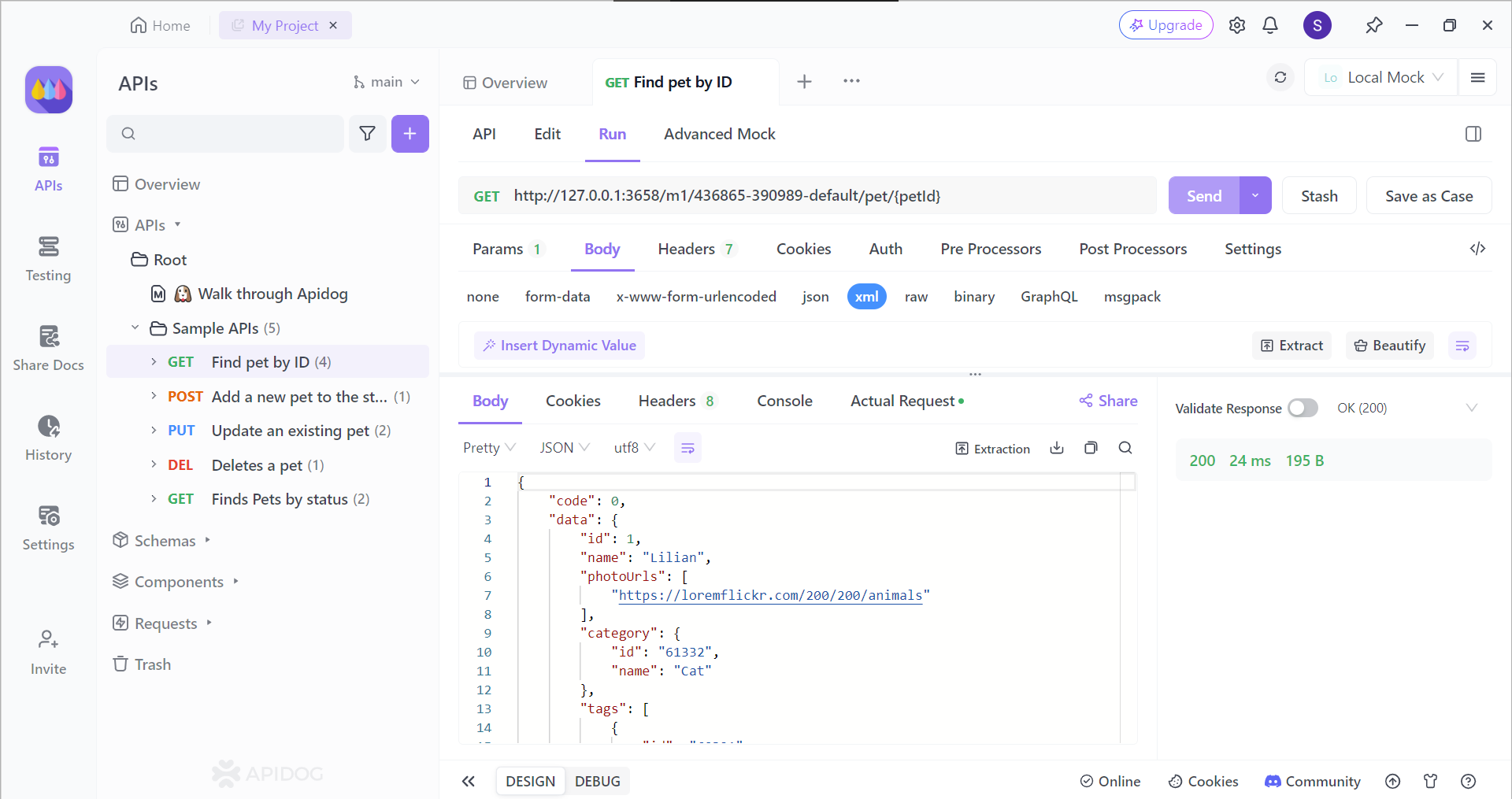
Pressing the Send button triggers the request and displays the API's response in full detail. The status code quickly indicates success or failure. You can also dive into the raw response, revealing the exact data format your client code needs to process information from the backend servers.
Automate Multiple-step Testing with Apidog

To demonstrate testing scenarios, we will be using a NumberConversion SOAP API as an example. Firstly, locate the Testing button pointed out by Arrow 1 in the image above. You should then see New Test Scenario, pointed out by Arrow 2.

You should then be prompted by this pop-up window asking you to input a few details about your new test scenario. Once you have filled it out, you can hit the OK button on the bottom right corner, or just "Enter" on your keyboard.
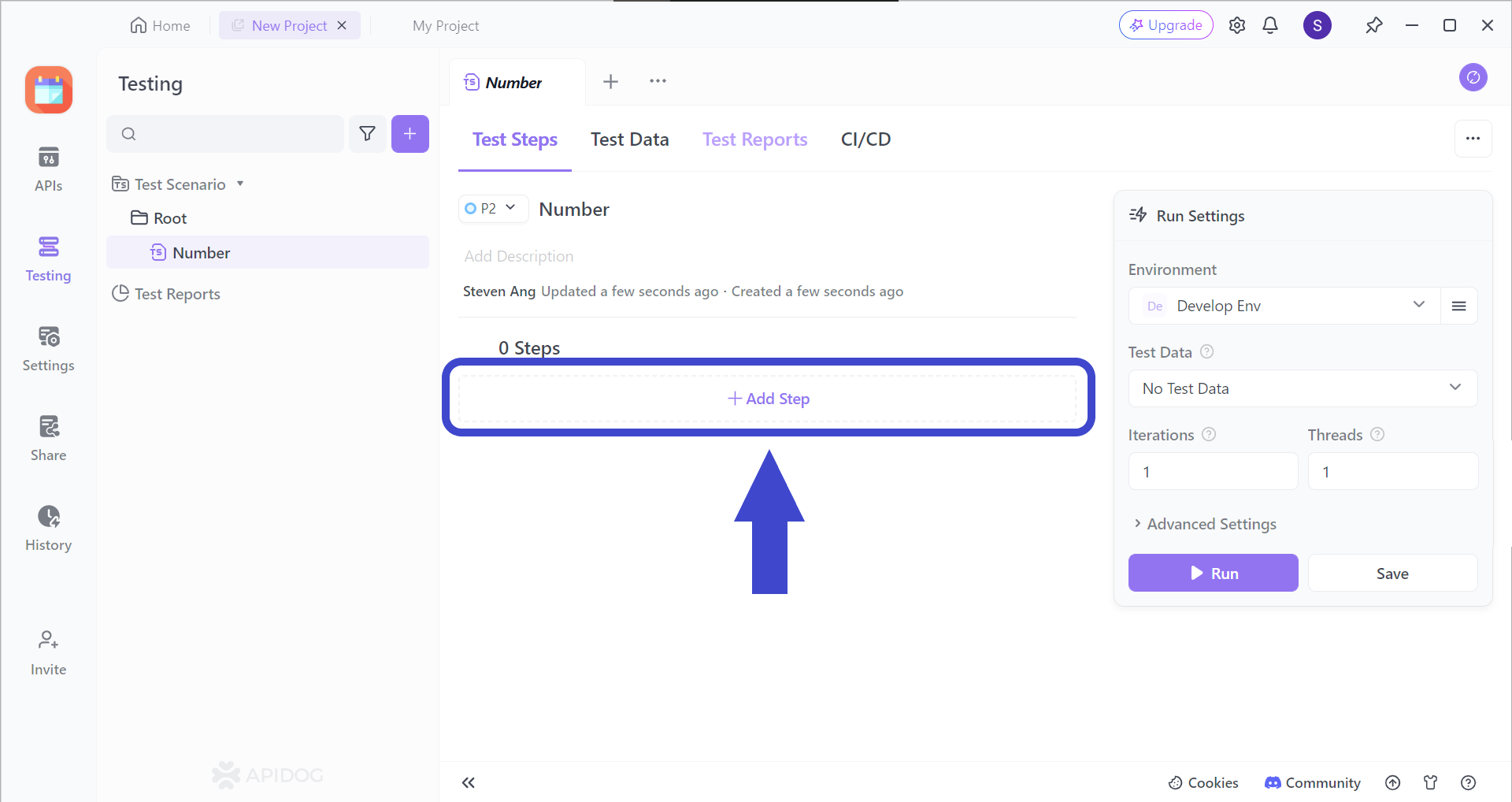
Add a step (or many more steps) to your test scenarios by clicking on the Add Step section. You should be able to see the image below.
Select "Import from API" from the drop-down menu.
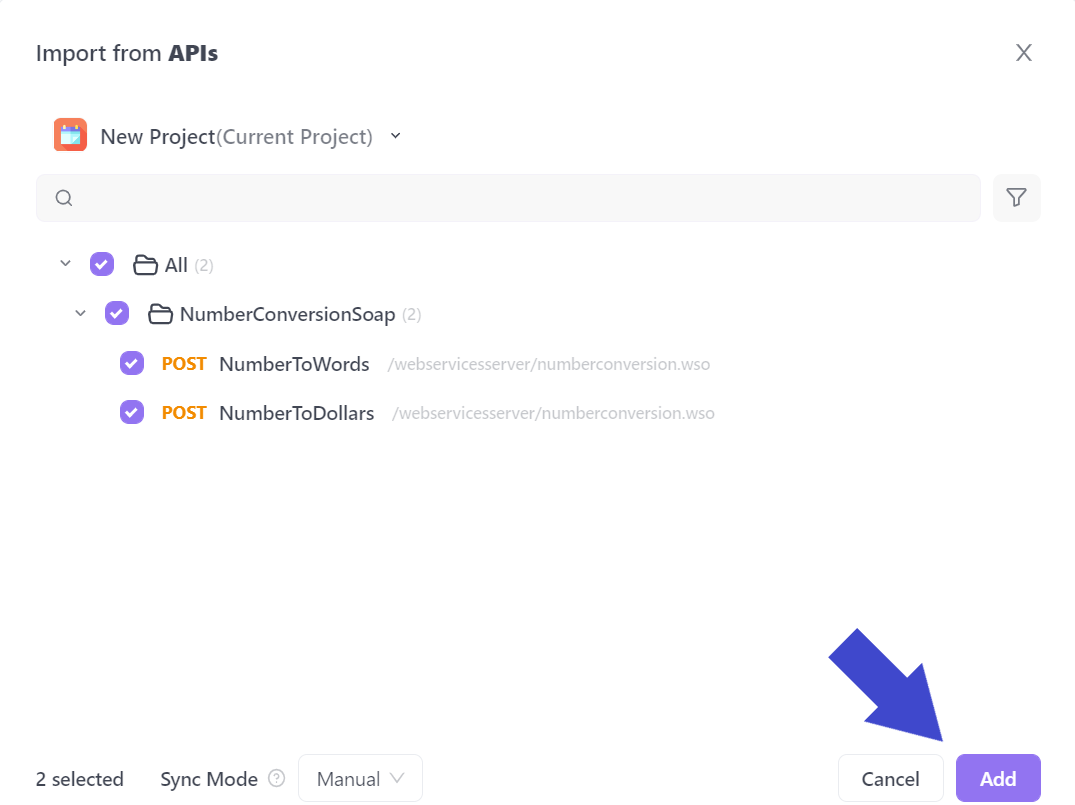
Select all the APIs you would like to include in your test scenario. In the example above, the API called NumberConversionSOAP has been included.
Note that in the case of the face swap API, you might have a lot more API requests, therefore you may have to handpick each API request you would like included in the testing scenario.
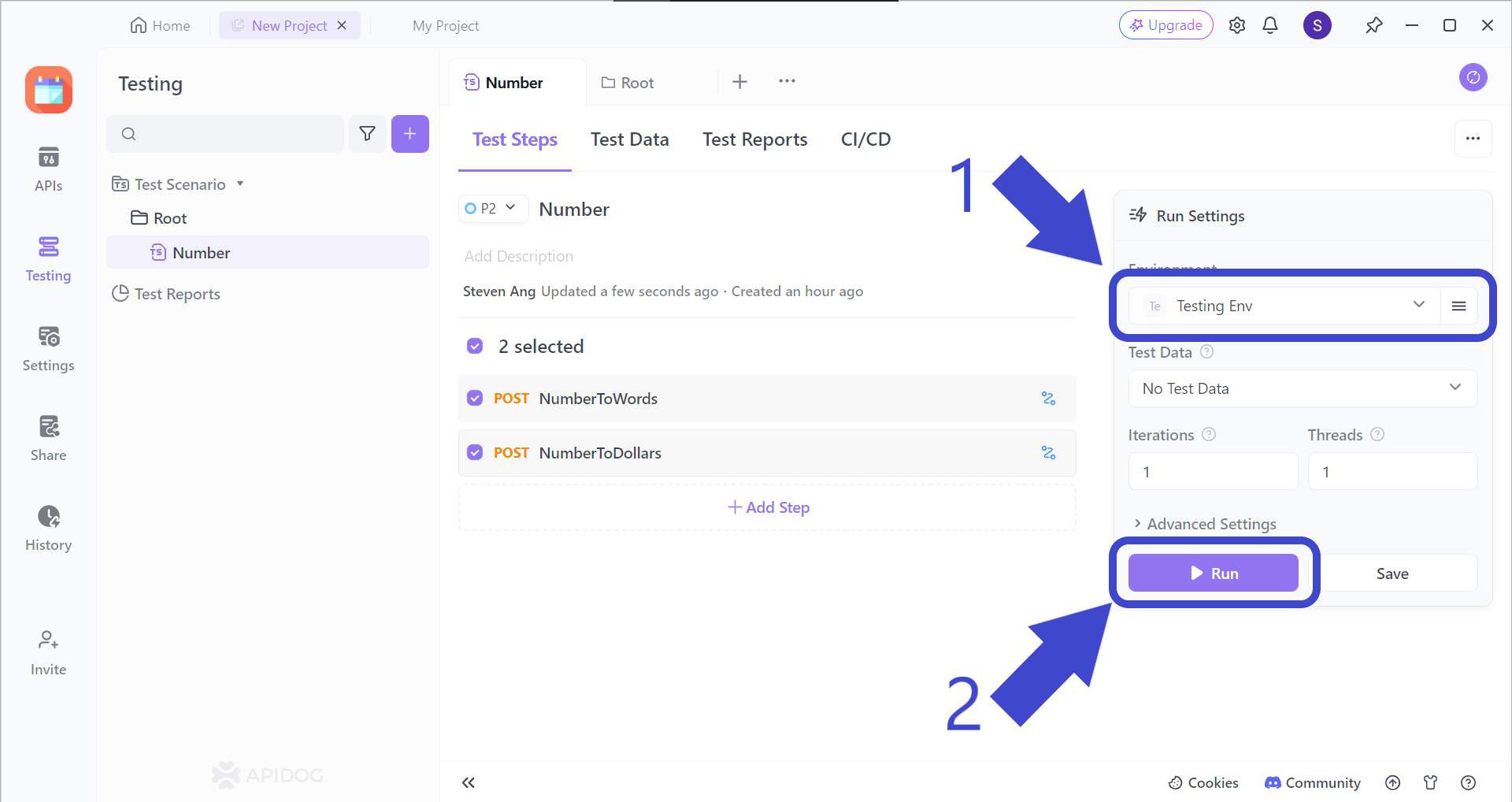
Before hitting the Run button to start your test scenario, make sure to change the test scenario environment, which should be Testing Env, as pointed out by Arrow 1.
Conclusion
Shift-left testing presents a compelling paradigm shift for software development. Integrating testing practices throughout the development lifecycle fosters earlier defect detection, improved collaboration, and a more efficient development process. The result is a higher quality product delivered faster and at a reduced cost.
While challenges like cultural shifts and automation investment exist, they can be mitigated with effective planning and team training. As the software development landscape continues to evolve, embracing shift-left testing principles will empower teams to deliver exceptional products that meet the ever-growing demands of the modern market.





